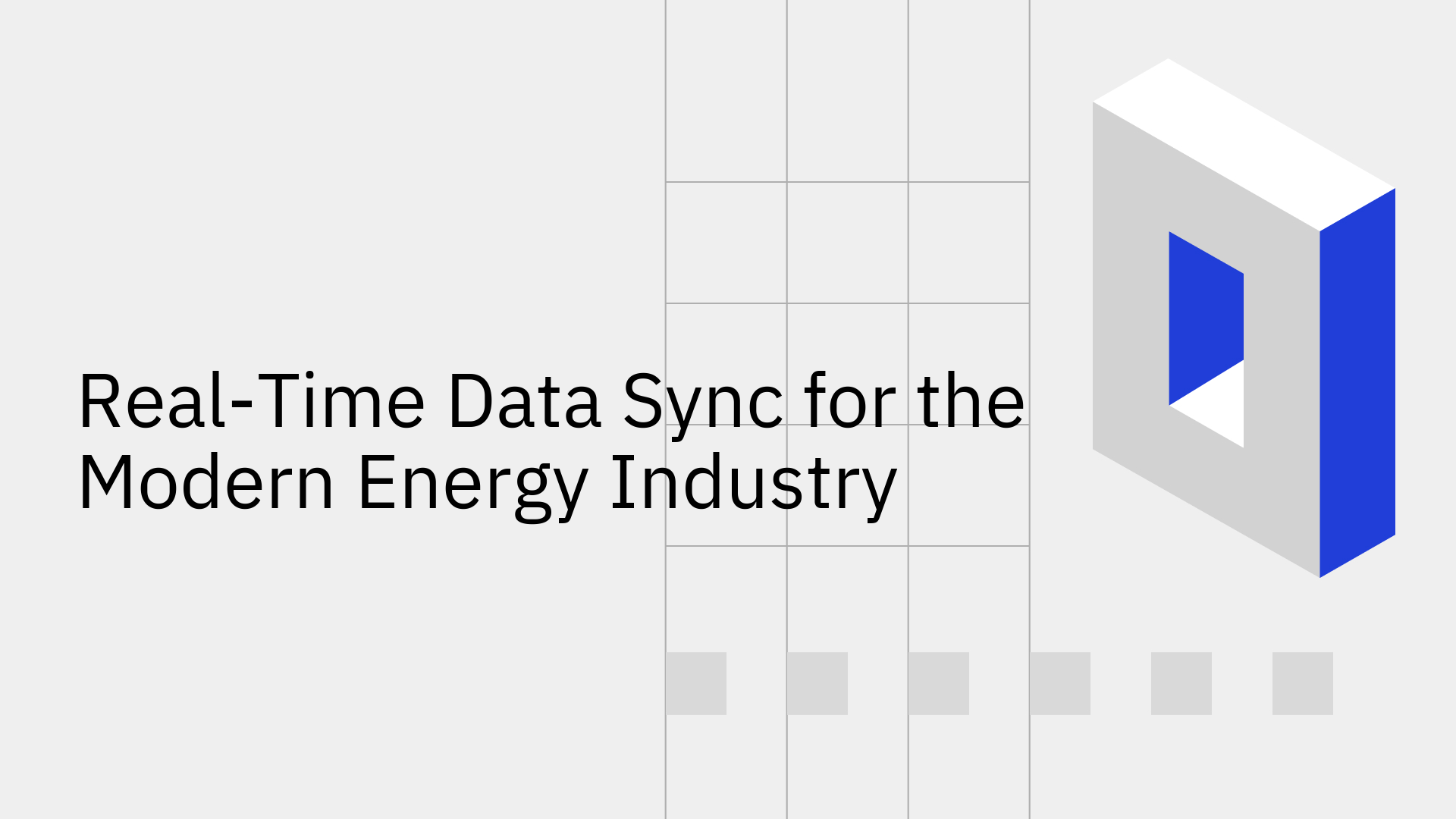
The energy sector is in a transformative phase, driven by the shift to renewable sources, dynamic demand patterns, and an explosion of data from smart grids, IoT sensors, and distributed assets.
Managing this data effectively is no longer a strategic option but an operational necessity for efficiency, sustainability, and competitive advantage.
The central challenge is integrating disparate data sources, and with renewables projected to make up 42% of electricity by 2028, real-time synchronization is the key to unlocking its full potential [3].
This data-driven evolution is happening as the technology sector itself drives surging electricity demand. The International Energy Agency projects that electricity consumption from data centers and AI will more than double by 2030, creating a feedback loop where technology both challenges the energy industry and offers powerful solutions to manage it [2].
For many energy companies, critical information remains trapped in data silos. Operational data from SCADA systems, financial data in ERPs, and asset management details exist in isolation, preventing a unified view of the business. T
his fragmentation creates significant operational friction, making fast, data-driven decisions nearly impossible. Selecting from the available energy industry data integration platforms is the first critical step toward dismantling these silos and creating a single source of truth.
Using multiple, non-integrated data management systems introduces a host of challenges that directly impact the bottom line and expose organizations to unnecessary risk [1]:
A robust, real-time data sync solution directly addresses the energy industry's core operational goals. By unifying data, companies can enable advanced applications that drive efficiency, reliability, and innovation. Exploring Real-Time Data Integration for the Energy Industry reveals how a modern platform can solve these critical challenges.
Integrate sensor data from assets like turbines and transformers with your operational systems in real time to implement a truly predictive maintenance strategy. Instead of reacting to failures, this allows AI-driven analytics to forecast equipment issues before they happen. The direct benefits are clear: you can optimize maintenance schedules, dramatically reduce unplanned downtime, and extend the functional lifespan of critical, high-value assets.
The modern grid is increasingly complex, especially with the integration of intermittent renewable sources. Real-time data synchronization unifies data from solar farms, wind turbines, battery storage, and grid assets into a single, cohesive view. This enables actionable steps like precise load balancing, optimized energy distribution, and proactive grid stabilization, ensuring a reliable and sustainable energy future.
The energy sector operates under some of the world's most stringent security and regulatory requirements. A centralized data integration platform allows you to enforce consistent security protocols across all connected systems. Features such as comprehensive audit trails, data residency controls, and robust privacy management ensure that all operations are not only efficient but also verifiably safe and compliant with industry standards.
Stacksync is the modern solution engineered to meet the unique challenges of the energy sector. It provides a no-code, real-time, and two-way synchronization platform that connects disparate systems seamlessly and reliably. As one of the 10 best data integration platforms for unified business data, Stacksync stands out with its operational focus and enterprise-grade power.
Stacksync's architecture is engineered for the high-volume, high-frequency data streams common in the energy industry. It provides steadfast reliability for utilities, renewables operators, and grid managers of any size, syncing data in milliseconds, not minutes. Whether handling data from thousands of distributed assets or integrating massive historical datasets, Stacksync is built to scale without performance degradation. This is a critical advantage over other real-time data sync technologies that actually work.
Traditional integration projects often take months of custom development and require specialized engineering teams. Stacksync flips this model. The intuitive, no-code setup allows most integrations to be configured in minutes. Even complex, multi-system projects can go live within days, enabling energy companies to see a return on their investment almost immediately.
For a concrete example of Stacksync in action, look no further than Nautilus Solar. As a leading operator of solar farms powering over 16,000 households, Nautilus Solar uses Stacksync to keep its operations running smoothly. They integrate NetSuite, Postgres, and HubSpot in real time, demonstrating the platform's versatility in connecting financial, operational, and customer-facing systems. This powerful integration is central to their mission of delivering clean energy and is a prime example of how Stacksync empowers modern industries.
While Stacksync offers a complete solution, it's helpful to understand the broader market of data integration tools. Other platforms exist, each with a different focus and its own set of tradeoffs:
Stacksync's key differentiator is its unique combination of true real-time, two-way sync, no-code simplicity, and enterprise-grade scalability tailored for mission-critical industries like energy. While other tools focus on moving data one way for analytics, Stacksync ensures all your systems remain in perfect harmony, reflecting the true state of your operations at all times.
The modern energy industry runs on data, and real-time access to that data is non-negotiable for success. Overcoming data silos is the most critical step toward improving operational efficiency, seamlessly integrating renewables, and ensuring grid reliability.
Stacksync provides the essential infrastructure to make this a reality. It empowers energy companies to modernize their operations, break free from legacy constraints, and lead the transition to a more sustainable and efficient energy future.
Ready to unlock the power of your data? Learn more about Stacksync's solutions for the energy sector and schedule a demo today.